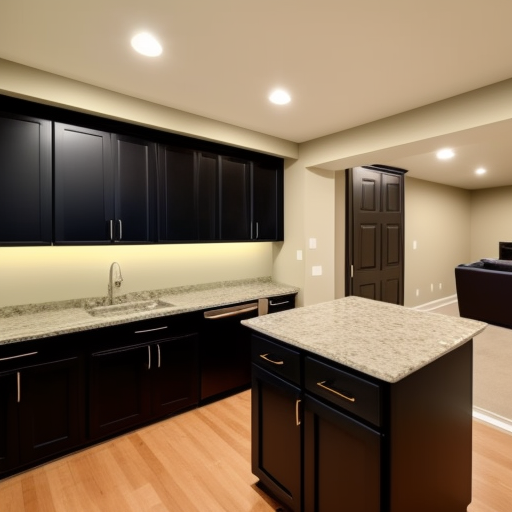Step 1: Determine the Placement of the Range Hood
The range hood should be placed directly over the cooktop, and the location should be marked on the ceiling. It is essential to measure the distance between the cooktop and the hood, and ensure that it is at least 24-30 inches above the cooking surface. This helps to prevent any potential fire hazards.
Step 2: Cut the Hole for the Duct
A hole needs to be cut in the ceiling to allow for the duct to be installed.

Step 3: Install the Ductwork
The ductwork is the ventilation system that will remove smoke, steam, and cooking odors from the kitchen. The ductwork should be installed in a straight, vertical line to the outside of the home. It is crucial to use rigid metal ducting, such as galvanized steel or aluminum, that is at least 6 inches in diameter. The ductwork should be securely fastened with screws and sealed with duct tape to prevent air leakage.
Step 4: Install the Range Hood
The range hood should be installed according to the manufacturer’s instructions. This typically involves attaching the mounting brackets to the wall or ceiling, then attaching the hood to the brackets. It is crucial to use appropriate hardware and follow all safety guidelines when installing the hood. Ensure that you turn off the power to the kitchen before beginning any work on the electrical components of the range hood.
Step 5: Connect the Duct to the Range Hood
The duct should be connected to the range hood using a duct connector. The connector should be securely fastened with screws and sealed with duct tape to prevent air leakage. Make sure to double-check all connections and fittings to ensure proper ventilation.
Step 6: Test the Range Hood
Once the installation is complete, the range hood should be tested to ensure proper ventilation. The hood should be turned on, and the airflow should be checked to ensure that smoke and steam are being properly vented outside. Make sure to check the ductwork for any leaks or blockages.
Step 7: Finish the Installation
The hole in the ceiling should be finished with a ceiling vent cover or grille to prevent drafts and to provide a finished look. Make sure to follow all safety guidelines when finishing the installation.
Safety Precautions
It is essential to follow all manufacturer instructions and local building codes when installing a duct range hood in a downstairs kitchen. Make sure to wear appropriate safety gear, such as gloves and safety goggles, and use the appropriate tools for each step of the installation process. Ensure that you turn off the power to the kitchen before beginning any work on the electrical components of the range hood.
